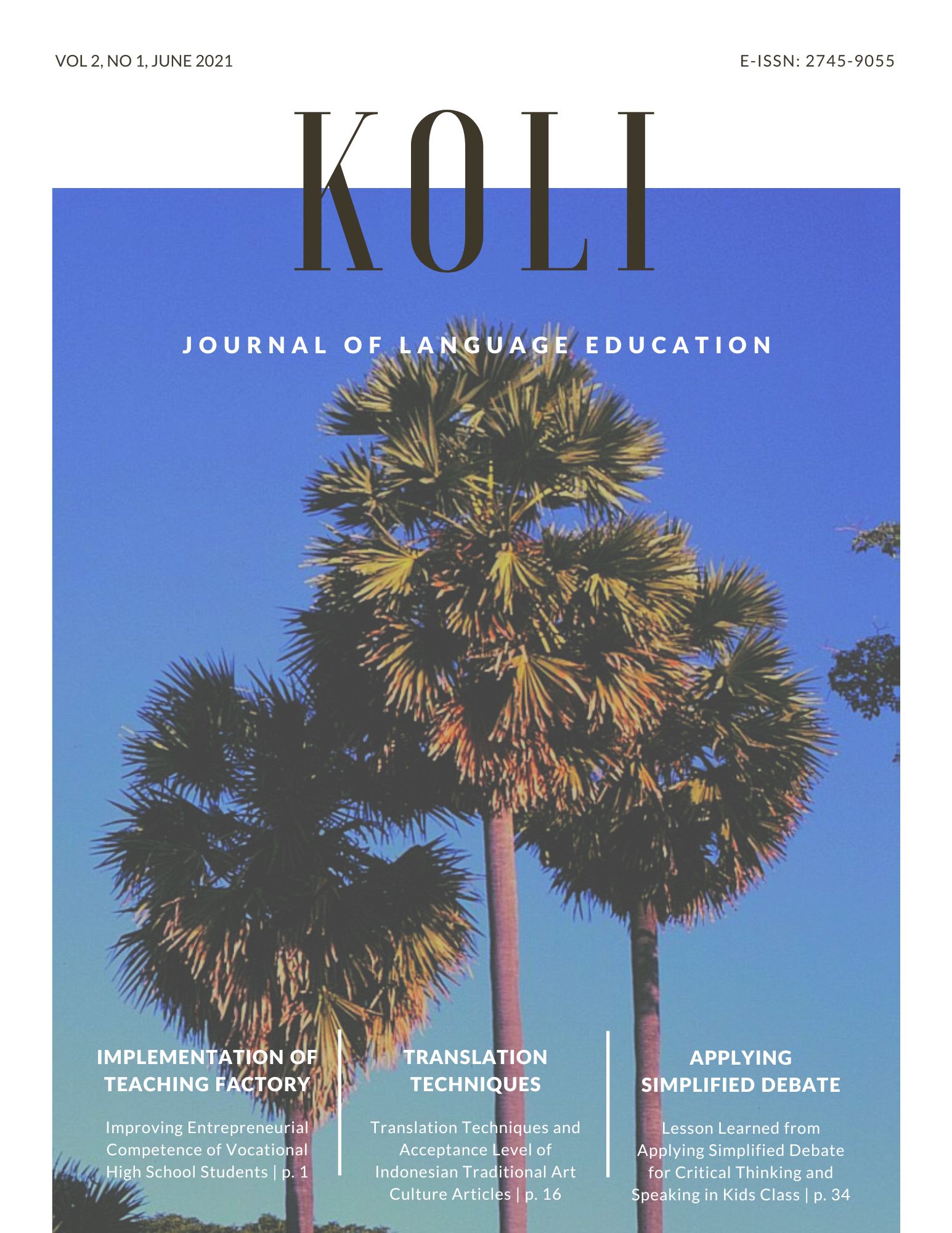Representing Intersemiosis in An English Language Teaching Textbook: A Systemic Functional Multimodal Discourse Approach
Abstract
In recent decades, multimodality has played pivotal roles in communication and language pedagogy. Conversely, limited studies have emphasized how intersemiosis is represented in English Language Teaching textbooks (hereafter, ELT textbooks), notably in the Indonesian EFL context. To fill this gap, this study examined how intersemiosis contribute to the process of meaning-making in an Indonesian ELT textbook. A selected chapter containing rich verbal and visual relations was selected as a corpus. The corpus was analyzed through Systemic Functional Multimodal Discourse Analysis (SFMDA). The findings revealed that the contributions of intersemiosis were represented by the meaning-making process in verbal and visual texts. This relationship enables students to comprehend the messages communicated by the texts. Pedagogically speaking, the effective design of intersemiosis in an ELT textbook potentially helps students not only understand the delivered teaching materials but also sharpen their multimodal literacy
Downloads
Copyright (c) 2021 The Author(s)

This work is licensed under a Creative Commons Attribution-NonCommercial-ShareAlike 4.0 International License.











